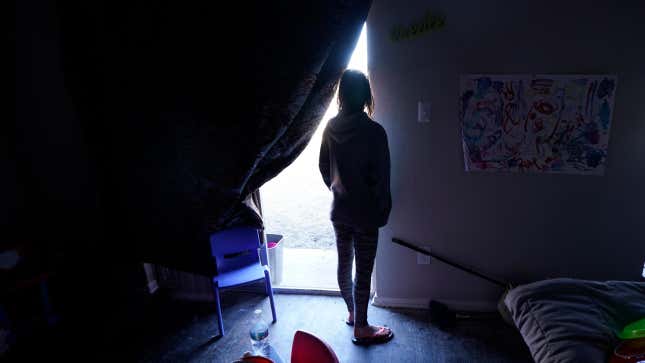
It’s been nearly four months since the devastating Texas blackouts. And thanks to a relatively speedy peer review process, we now have an academic accounting of what exactly went wrong—and how to prepare the grid for future extreme weather.
The study, released last week in Energy Research and Social Science, pulls together all the intimate details of the sprawling blackout the led to up to 700 deaths. It was clear in real-time that natural gas systems failed due to shoddy winterization thanks largely to Texas’ loosely regulated energy market. But the new study steps back to take in the bigger picture.
“We thought it important to look at the event with a bit of temporal distance from the crisis itself, which a number of us personally experienced, and capture what the data tell us about why it was as bad as it was and how blackouts like this could be avoided in the future,” Joshua Busby, a distinguished scholar at the University of Texas’ Strauss Center and lead author of the report, said in an email. “We also thought our paper could pull together some of those disparate threads on the causes, the impacts, and solutions into a single review paper that others could learn from.”
The lessons are stark. Roughly 40% of natural gas production went offline or was otherwise unavailable during the freak cold spell the upended life in Texas. Gas alone ended up being responsible for about two-thirds of the overall power shortage. Wind power—a Republican and gas industry bête noire—also had its shortcomings, but not nearly at the rate of failure of natural gas. The findings show Texas suffered from interlocking problems where gas is the primary source of generating electricity and electricity is needed to produce gas. So, along with the lack of weatherization, the state essentially entered a spiral of gas-induced suffering that left millions of Texans without power for days on end.
Those that did get power also received shockingly high electricity bills, rising into the five figures. That’s the result of, in part, the state’s Public Utility Commission setting wildly high prices for energy producers in an effort to get more juice on the grid. The commission offered producers $9,000 per megawatt hour in an effort to entice more production as the grid began to sputter. In comparison, the study notes that prices preceding the freeze were $30 per megawatt hour. The sky-high prices stayed in place for days even after enough power plants started to come back online to meet demand, resulting in $16 billion in excessive charges to customers or roughly $1,700 per household in Texas. (The whole event cost ratepayers $47 billion, a bill electricity customers will be paying off for decades.)
Conservative policymakers, think tanks, and run-of-the-mill hacks have spent the intervening months arguing gas is good, actually, and the only answer is more of it. But the study makes clear that there is no silver bullet to stave off the next blackout, let alone relying on gas. The authors highlight the need to reduce energy demand, noting Texas is the top energy-using state in the U.S. but ranks 29th in energy efficiency. Heat pumps for heating and cooling, insulating homes, and other strategies could all reduce demand on the grid during a deep freeze or a big heat wave, reducing the risk of catastrophic failure.
Natural gas is damaging to the climate, and its days are numbered in the long run as the world transitions to renewables. But in the near term, it’s clear that weatherizing gas plants and wells are vital to avoid another blackout. As the study notes, just 6% of Texas gas wells provide 60% of all gas produced. Regulations requiring them to be weatherized would go a long way toward ensuring they don’t crap out as would weatherizing pipelines and other infrastructure. (Obviously switching to renewables would be a fine choice as well, albeit with the need for extra capacity.)
Finally, the paper recommends connecting Texas back up to the other main U.S. grids. Texas lawmakers broke the Texas grid away in the 1990s in an effort to avoid federal oversight and intervention. But as the blackout shows—particularly the heavy toll it took poor households of color—sometimes a little federal oversight or help from other states might not be the end of the world.
“We have to plan for weather shocks and identify the potential for cascading risks, where systems are interlinked and where failures in one of them can lead to failures in other services,” Busby said.
Texas just concluded its legislative session, and reader, I regret to inform that the legislature did not adopt all the recommendations in this paper (which to be fair to state representatives and senators, did not come out until the session was over). Lawmakers did agree to some weatherization rules for some gas infrastructure as well as some price protections. But they didn’t end the hegemony of gas or go far enough. Busby noted that “ordinary Texans who bore the brunt of the crisis saw little relief.” More ominously, all the focus on the prospect of a freeze may leave Texas’ grid open to extreme heat, which is intensifying due to climate change.
“The next crisis may very well be crippling summer heat so preparing to avoid the next freeze won’t deal with the broader problem that our climate is changing and our infrastructure is designed for the 1960s, not the 2060s,” Busby said.